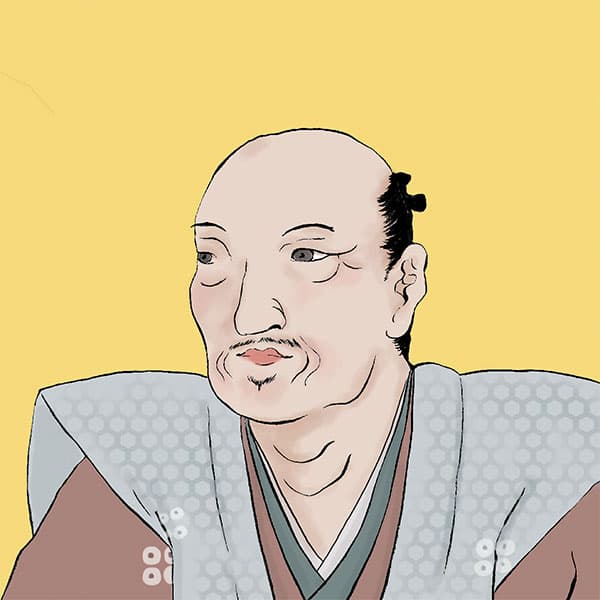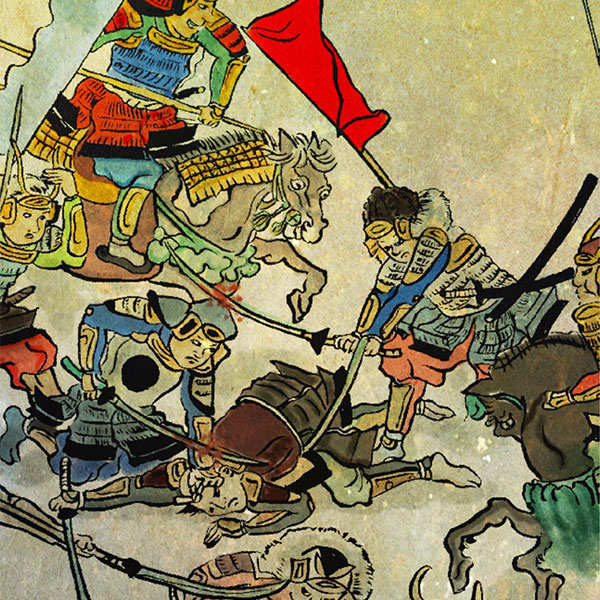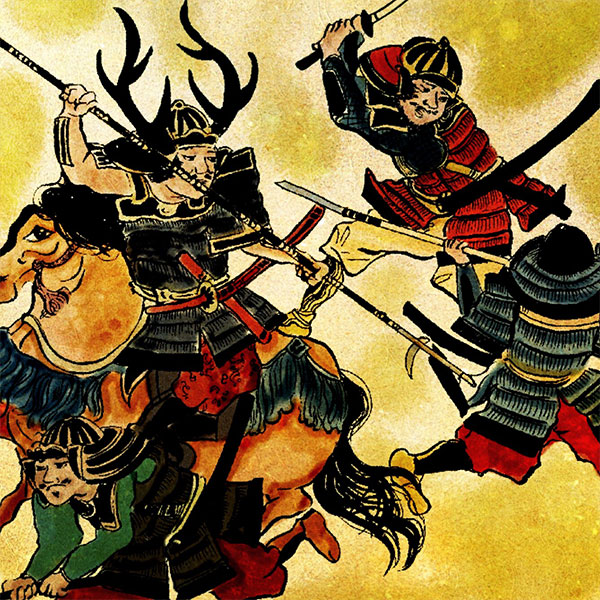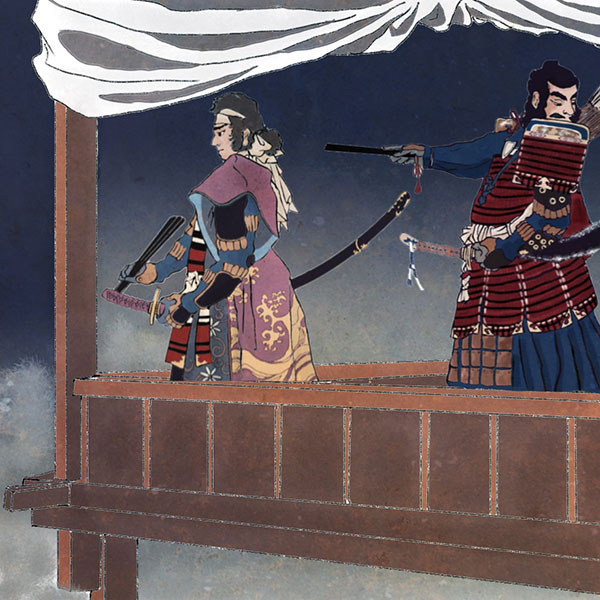Yukimura Sanada (1/2)The best soldier in Japan (Hinomotoichi no Tsuwamono)

Sanada Yukimura
- Article category
- biography
- name
- Sanada Yukimura (1567-1615)
- place of birth
- Nagano Prefecture
- Related castles

Ueda Castle

Oshijo
The late Muromachi period, also known as the Sengoku period, ended with Tokugawa Ieyasu.
After winning the Battle of Sekigahara, Ieyasu established the Edo Shogunate. Furthermore, Ieyasu destroyed the Toyotomi family left behind by Toyotomi Hideyoshi at the Battle of Osaka. It was Sanada Yukimura (his real name was Yukimura, but in this story, he will be called Yukimura) who pushed Ieyasu into a difficult situation during the Osaka Siege. Why did Yukimura fight against the Tokugawa family at the Osaka Siege? This time, I would like to take a look at the life of Yukimura Sanada.
Sanada family independence from birth
Born in 1567 (also known as 1570) as the second son of Masayuki Sanada. His older brother Nobuyuki called him Genzaburo, and Yukimura called him Genjiro.
The Sanada clan is a Kokujinshu from the small prefecture district of Shinano Province, and belonged to Harunobu Takeda (Shingen) of Kai Province around the time of Yukimura's grandfather, Yukitaka Sanada. Yukitaka was instrumental in the subjugation of Shingen's Shinano Province (present-day Nagano Prefecture), and Yukitaka's eldest son, Nobutsuna Sanada, was instrumental in the invasion of Shinano and the conflict with the Uesugi clan in Echigo Province as a leader of the Takeda clan. He was by far the most active of Takeda's vassals.
Yukimura's father, Masayuki, was Yukitaka's third son, and he became the foot commander of the Takeda clan and was adopted by the Muto clan, a branch of the Takeda clan.However, in 1575, at the Battle of Nagashino, his eldest brother, Nobutsuna, and second brother, When Masaki died in battle, he succeeded the Sanada clan.
In March 1582, the Takeda clan was destroyed by the invasion of the Oda and Tokugawa allied forces, and the Sanada clan submitted to Oda Nobunaga. Yukimura was taken hostage by Kazumasu Takigawa of the Oda family, who was sent to pacify the Kanto region.
However, in June of the same year, Oda Nobunaga died in the Honnoji Incident. Kai Province (present-day Yamanashi Prefecture) and Shinano Province, which were territories of the Takeda family, were thrown into turmoil, and a dispute broke out among the Uesugi, Hojo, and Tokugawa families over the Takeda territory (Tensho Jingo War). .
In this confusion, the Sanada family became independent from the Oda family by following the Uesugi family. Yukimura became a hostage from Kazumasu Takigawa to the Uesugi family, and went to Echigo Province (present-day Niigata Prefecture).
From there, the position changed rapidly, including becoming subordinate to the Tokugawa family, but in 1585, the Tokugawa family, who wanted to occupy Shinano Province, sent troops and fought with the Sanada family, the First Ueda. It's a battle. With reinforcements from the Uesugi family, the Sanada family repulsed the Tokugawa family.
Yukimura and Toyotomi Hideyoshi
When Hashiba Hideyoshi (Toyotomi Hideyoshi), an Oda vassal, rose to power, Masayuki, along with the Uesugi family, became subject to him.
Under the Toyotomi family, Masayuki Sanada came to be treated as an independent daimyo. Yukimura moved to Osaka Castle as a hostage, and later became a member of Hideyoshi's horse mawarishu, where he began to gain knowledge of Tomoyuki. In addition, he married Chikurinin, the daughter of Yoshitsugu Otani, who became the feudal lord of Echizen from Hideyoshi's page name, as his legal wife.
In 1589, Toyotomi Hideyoshi ordered Nobuyuki Sanada's castle, Numata Castle, to be handed over to the Hojo family in the Kanto region. However, the Hojo family went against the ruling and attacked Meikumo Castle, which led to Hideyoshi's conquest of Odawara against feudal lords across the country.
In the following year's expedition, his father Masayuki and older brother Nobuyuki attacked Matsuida Castle and Minowa Castle with Toshiie Maeda and Kagekatsu Uesugi, while Yukimura and Yoshitsugu participated in the attack on Oshi Castle under Mitsunari Ishida. Thus, Hideyoshi destroyed the Hojo family.
Furthermore, during Hideyoshi's war in Korea, the Sanada family was stationed at Hizen Nagoya Castle. Yukimura belonged to the Oma Mawarigumi of the Sannomaru Gobanshu at Nagoya Castle.
In 1594, Yukimura Sanada was appointed Jugoi (Junior Fifth Rank) Shimozaemonsa and was given the surname Toyotomi. It is said that Yukimura's career advancement reflected the wishes of his father, Yoshitsugu Otani.
Battle of Sekigahara
Toyotomi Hideyoshi, for whom Sanada Yukimura served, died in 1598.
After Hideyoshi's death, Tokugawa Ieyasu, a samurai who held the highest position in the imperial court, rose to power.
In 1600, Tokugawa Ieyasu, one of the Five Elders, raised an army to subjugate Uesugi Kagekatsu in Aizu, who was also one of the Five Elders, and while he was away, the Five Magistrates, Mitsunari Ishida and others raised an army, leading to the Battle of Sekigahara. Masu.
Yukimura joined Mitsunari Ishida's camp because his father-in-law Yoshitsugu Otani sided with Ishida, and his father Masayuki Sanada also sided with Ishida. His older brother Nobuyuki, whose wife was Honda Tadakatsu's daughter (Komatsu-dono), sided with the Tokugawa side.
This meant that the father, younger brother, and older brother were divided into camps.
The main army of the Tokugawa family advanced from the Kanto region along the Nakasendo route led by Hidetada Tokugawa (Ieyasu's third son). Masayuki and Yukimura holed up in Ueda Castle, their residence, and stopped Hidetada Tokugawa. Hidetada's forces took time to conquer the area due to the small number of Sanada forces, and when ordered by Ieyasu to go to Kyoto, they gave up and left.
(Second Battle of Ueda)
However, Ishida Mitsunari was defeated by Tokugawa Ieyasu at the Battle of Sekigahara.
Masayuki and Yukimura would have been ordered to die as generals of the defeated army, but thanks to the intercession of Nobuyuki and his father-in-law, Tadakatsu Honda, they were only ordered to be exiled to Mt. ) moved to Mt. Kudo.
While imprisoned in Mt. Kudo, Yukimura had deep relationships with local people and old monks, went hunting and visited temples, played Go and Sugoroku, and was absorbed in reading military books until late at night in his mansion. It is said that he often gathered together local samurai and retainers to train them in military techniques, archery, and firearms.
His father, Masayuki Sanada, died in 1611 while he was in seclusion. In 1612, Yukimura became a monk and took the name Kouhaku.
Yukimura's escape from Mt. Kudo and Osaka's winter camp
In 1603, Tokugawa Ieyasu was appointed Seii Taishogun and established the Edo Shogunate.
During this time, Yukimura Sanada was living in seclusion at Mt. Kudo in Kishu Province.
However, in 1614, relations between the Tokugawa family and the Toyotomi family deteriorated due to the Hokoji Temple Bell Mei Incident.
The Toyotomi family, unable to expect assistance from the daimyo, gathered Ronin and strengthened their military. A messenger also visits Yukimura, who is living in seclusion on Mt. Kudo, and requests entry to Osaka Castle. Yukimura appealed to his father Masayuki's vassals in Shinano Province, where he was born and raised, to join the war, escaped from Mt. Kudo, and entered Osaka Castle with his eldest son Daisuke.
It is said that Yukimura's army, which entered Osaka Castle, unified itself in red.
At the Osaka Winter Siege in 1614, Yukimura insisted on preparing his army, invading Kyoto, and fighting outside the castle. The ronin people gathered at the castle expressed their approval, but the Toyotomi family did not accept the proposal and ended up staying in siege. Therefore, Yukimura built an earthen castle called Sanadamaru on the south side of Sannomaru, which is considered to be the weakest part of Osaka Castle.
Here, Yukimura repulsed the attackers and made his military name known to the world for the first time.
However, halfway through the battle, the Toyotomi family and the Tokugawa family decided to make peace.
Osaka summer camp and Yukimura's end
The battle was halted due to the Osaka Winter Camp making peace.
The Sanada Maru built by Yukimura was demolished when the moat was filled in as a condition of peace. Tokugawa Ieyasu, who was plotting to weaken the Toyotomi side, presented Yukimura Sanada with the condition of providing territory in Shinano Province, and was persuaded to defect by saying, ``If you agree, I will give you an oath.''
However, Yukimura refused, saying that he was indebted to Hideyori.

- WriterTomoyo Hazuki(Writer)I have loved history and geography since my student days, and have enjoyed visiting historical sites, temples and shrines, and researching ancient documents. He is especially strong in medieval Japanese history and European history in world history, and has read a wide range of things, including primary sources and historical entertainment novels. There are so many favorite military commanders and castles that I can't name them, but I especially like Hisashi Matsunaga and Mitsuhide Akechi, and when it comes to castles, I like Hikone Castle and Fushimi Castle. Once you start talking about the lives of warlords and the history of castles, there's a side of you that can't stop talking about them.








